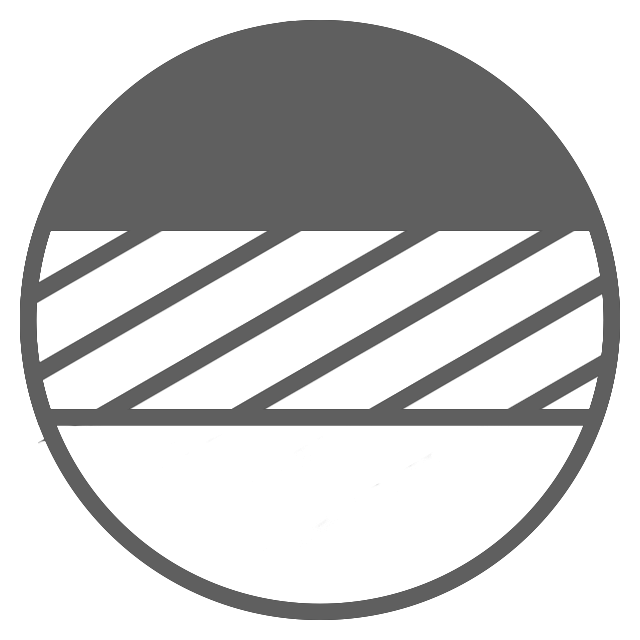Choosing the right home for a plant is as important as the plant itself. A pot is not just a decorative shell, it shapes root growth, watering frequency, temperature around the root zone, and even how resilient a plant becomes through the seasons. Get the container right and many other tasks feel easier.
The good news is that there is a pot that fits each plant, location, and gardener’s style. It starts with a few practical choices that blend horticulture with design.
What a pot really does
A container sets the stage for everything that happens below the compost surface. It controls how air and moisture move through the root zone, buffers roots from heat and cold, and keeps plants upright. It also frames the plant, which matters if you care about architecture and style in the garden.
Consider these hidden jobs:
- Aeration, which dictates how much oxygen roots receive between waterings
- Drainage, which protects against waterlogged compost
- Temperature buffering, which can be a friend or foe on sunny patios
- Stability, especially for top-heavy shrubs and trees
- Space planning for roots to expand without circling
Size and proportion
Roots need room, but too much space can cause its own problems. Excess compost in a very large pot tends to stay wet for a long time, which can starve roots of oxygen.
Rules that work in most homes and gardens:
- When potting up, move to a container 2 to 5 centimetres wider in diameter for small houseplants, 5 to 10 centimetres for larger.
- Depth matters as much as width. Lavender and rosemary prefer wider, shallower pots with gritty compost. Tomatoes and dahlias appreciate deeper containers.
- Taprooted plants like lupins or young trees prefer depth. Fibrous-rooted plants like basil or cyclamen appreciate width.
- If a plant dries out within a day in warm weather, it likely needs a bigger volume or a more water-retentive compost.
Proportion also affects looks. A tall ornamental grass perched in a short, wide pot often appears unstable. A low mound of thyme in a towering cylinder can look lost. Let the plant’s silhouette guide the pot’s profile.
Drainage and water control
Drainage holes are not optional. A single central hole works, several smaller holes work better. Without them, you are left guessing and the plant pays the price.
Helpful practices:
- Elevate outdoor pots on feet to stop holes clogging on paving.
- Use a mesh square over large holes to keep compost in place while maintaining flow.
- Skip the gravel layer myth. Pebbles at the bottom do not improve drainage, they raise the perched water table and make the root zone wetter.
- Choose the right saucer. Indoors it protects furniture, outdoors it can encourage root rot if left full. Empty standing water after each watering unless you are using it deliberately to rehydrate very dry compost.
- Consider a wick. Thread a cotton cord through a drainage hole into a reservoir below to create a basic self-watering setup.
Self-watering planters can be brilliant for busy weeks. Look for:
- A visible water-level indicator
- A wicking platform with air gap
- Overflow protection so heavy rain does not flood the root zone

Shape and internal design
Subtle details inside a pot affect root behaviour. Some ceramic pots narrow sharply at the rim. That lip makes repotting harder and encourages roots to circle. Straight sides and smooth interiors are kinder.
Guidance by plant type:
- Tall cylinders suit deep-rooted specimens, small trees, and canna.
- Low bowls suit alpines, succulents, and herbs that prefer quick drying.
- Square pots optimise space in tight courtyards and indoor shelves.
- Wide tops make grooming and soil checks easier.
Air-pruning containers, including fabric grow bags and some plastic designs with side perforations, encourage roots to branch rather than circle. That usually means a denser, healthier root system and a plant that copes better with heat.
Indoor and outdoor realities
Indoors, water has nowhere to go other than down to a saucer or over a table. Use cachepots to simplify life. Keep the plant in a plastic nursery pot with holes, drop it into a decorative outer pot without holes, and lift it out to water at the sink.
Outdoors, weather rules:
- Frost can crack unsealed terracotta and some ceramic glazes. Choose frost-rated pots or move vulnerable ones under cover.
- Wind topples tall pots with heavy crowns. Either choose heavier containers or anchor discreetly to railings or ground fixings.
- Sun exposure changes water use. A dark pot in full sun needs more frequent checks than a pale pot in partial shade.
- Pollution and salts can stain porous pots. A breathable sealant on terracotta can help while preserving the look.
Weight, movement, and safety
Large containers filled with wet compost are heavy. Plan for people and property.
- Use pot caddies with lockable wheels for patios and balconies.
- Consider lightweight materials like fibreglass for rooftops.
- On balconies, check load limits. Distribute weight along walls and over joists.
- Keep tall pots away from areas where children play or pets race.
- In windy sites, pick low, broad containers for top-heavy specimens, or add hidden ballast at the base.
Sustainability and lifecycle
Every container has a footprint. Firing ceramic consumes energy, concrete stores carbon but takes energy to produce, plastics can last for years but raise concerns about microplastics if degraded by sun.
Thoughtful choices:
- Recycled-plastic pots keep material in circulation and are light and durable when UV-stable.
- Wood from rot-resistant species, lined with a breathable barrier, gives years of service and is easy to repair.
- Terracotta ages beautifully and can be mended with lime-based mortar for hairline cracks.
- Biodegradable fibre pots are good for seed raising and can be planted straight out, though they dry quickly.
- Repair rather than discard. Hairline cracks often stabilise with a band clamp or epoxy on the interior.
Buy once, buy well. A classic frost-proof pot can outlive several cheap containers, reducing waste over time.
The visual composition
Plants and pots are partners. The colour, texture, and patina of a pot can elevate a simple planting or clash with it.
Ideas that work:
- Repeat a finish across several sizes to knit a space together.
- Use odd-numbered groups for rhythm, then vary heights for depth.
- Let foliage lead the palette. Grey leaves sing against terracotta; glossy greens feel richer next to matte charcoal or unglazed clay.
- Patina tells a story. Limescale and moss on old clay can feel authentic in cottage and courtyard settings. Keep it clean if you prefer a crisp modern look.
Prep and potting technique
Great results start on potting day. The goal is a firm, even fill with good contact between roots and compost, plus clean drainage paths.
Step by step:
- Clean the pot with a brush and, if reused, a dilute bleach solution or garden disinfectant. Rinse and dry.
- Place a small square of mesh over the drainage hole. Skip the gravel.
- Add a shallow layer of compost and set the plant at the right height. The finished surface should sit 1 to 2 centimetres below the rim to allow for watering.
- Backfill with compost, tapping the pot to settle it. Firm gently with fingers. Avoid compacting hard.
- Water slowly until excess drains. Top up any sinkholes with more compost.
- Label the plant with name and date. Future you will be thankful.
About compost: match it to the plant. Use gritty, free-draining mixes for succulents; moisture-retentive, peat-free mixes with added loam for shrubs; ericaceous mixes for acid lovers like azalea and blueberry. Adding controlled-release fertiliser granules gives a steady feed for months.

Seasonal care and routine
Pots dry out faster than beds, then cool and heat quicker too. That means care adjusts with the calendar.
- Spring: check for roots circling, trim if needed, and repot on a mild day. Begin feeding once new growth appears.
- Summer: water deeply, less often, rather than a daily splash. Group pots to raise humidity for ferns and reduce evaporation.
- Autumn: reduce feeding, keep watering consistent while temperatures drop. Move frost-tender plants under cover before the first cold nights.
- Winter: lift pots on feet, avoid waterlogged compost, and protect vulnerable materials from freeze-thaw cycles. Wrap containers with hessian or bubble wrap where necessary.
Clean pots between seasons. A scrub removes algae and fungus gnat eggs. Inside, control fungus gnats by letting the top couple of centimetres dry between waterings and by using yellow sticky traps until populations collapse.
Professional touches that make life easier
A few habits from professional growers translate well at home.
- Pot-in-pot technique outdoors: sink a plastic pot in the ground or inside a larger decorative pot, then drop the plant in its liner. Swap seasonal displays without disturbing roots.
- Cachepots indoors: keep the plant in a functional pot with holes and use any stylish outer container you like. Water at the sink, let drain, then return.
- Pre-soak new terracotta: soak in a bucket until bubbles stop, which reduces the initial thirst that can rob compost of moisture.
- Label with pencil: ink fades. Pencil endures weather and watering.
- Small top-dressings: a layer of grit or decorative stone keeps compost from splashing, reduces algae, and sharpens the look.
Matching pots to plants you love
A few pairings rarely miss.
- Lavender, thyme, rosemary: unglazed terracotta with very gritty compost, full sun, pot feet to keep air flowing underneath.
- Tomatoes and chillies: large plastic or fibreglass planters that hold moisture, with canes or a central spiral for support.
- Citrus: frost-proof ceramic with drainage, a loam-based compost, and a dolly for winter moves.
- Ferns and calatheas indoors: cachepot method with a breathable nursery pot, consistent moisture, bright indirect light.
- Agaves and aloes: shallow stone bowls with minimal organic matter, kept in the brightest spot and well away from winter wet.
A few myths to leave behind
- Gravel at the bottom improves drainage. It does not. Good drainage needs holes and a suitable compost texture.
- Bigger is always better. Oversized pots stay wetter, which harms roots that need air.
- Terracotta is always thirsty. Glazed interiors or sealed clay can slow moisture loss while keeping the clay look.
- Self-watering pots are set-and-forget. Wicks can clog, and plants still need checks, especially in heatwaves.
Keeping plants and floors happy indoors
Spills and stains can spoil the look of a room. You can have healthy plants and clean surfaces.
- Use clear plastic liners inside decorative pots without holes.
- Choose wide saucers with felt feet to protect wood floors.
- Water at the sink, let drip for 10 minutes, then return the plant.
- Add a moisture mat or a discreet tray under a group of pots for peace of mind.
When a plant outgrows its home
Repotting is a refresh, not surgery. The best time is just before active growth.
- Water the day before to reduce stress.
- Slide the plant out, trim circling roots lightly, and remove a little tired compost.
- Move up a size, set at the same depth, and water in.
- Hold off on strong liquid feeds for a couple of weeks while new roots settle.
Large specimens in monumental pots can be root-pruned in place every few years. Lift the plant slightly, slice away a wedge of roots at the edge, add fresh compost, and water well. That buys time without changing the pot.
Putting it all together
A well-chosen container gives roots air, drains cleanly, buffers heat, and looks right for the plant and the space. Decide on material by how you water and where the pot will live. Size for healthy growth rather than the quickest leap. Shape for stability. Then add craft on potting day and keep a light, regular routine.
With those pieces in place, the plant does the rest. Flowers last longer, foliage keeps its colour, and the whole display sits effortlessly in its setting. That is the quiet power of the right pot.





